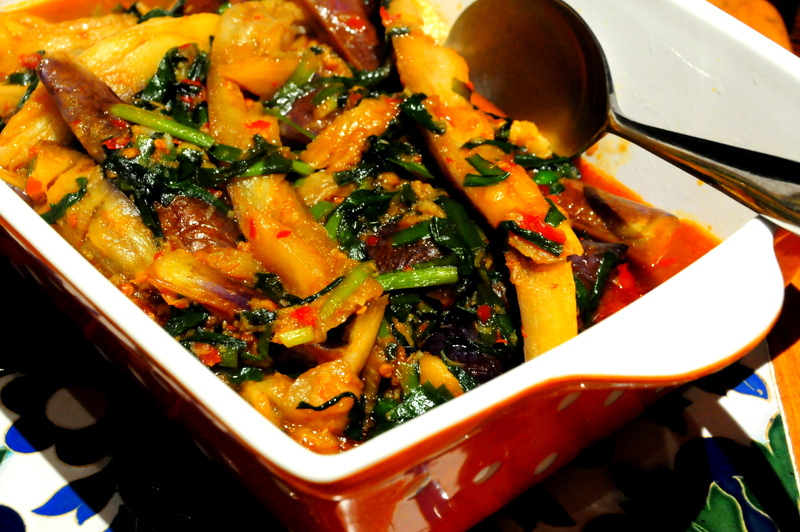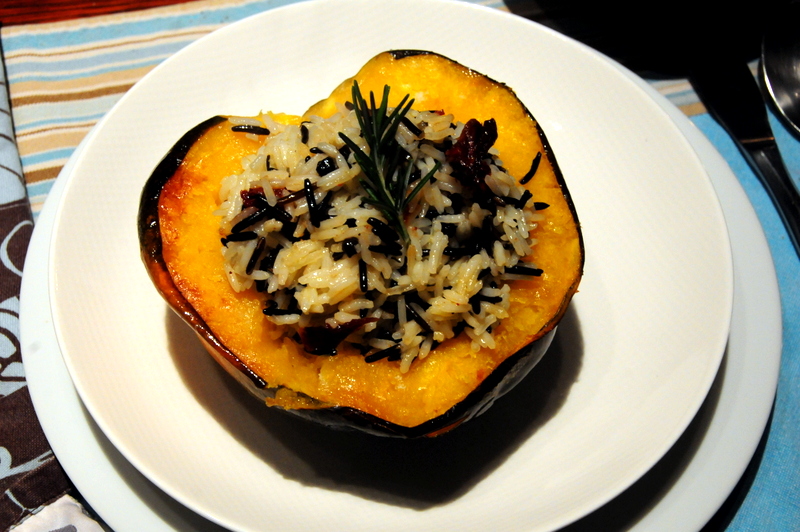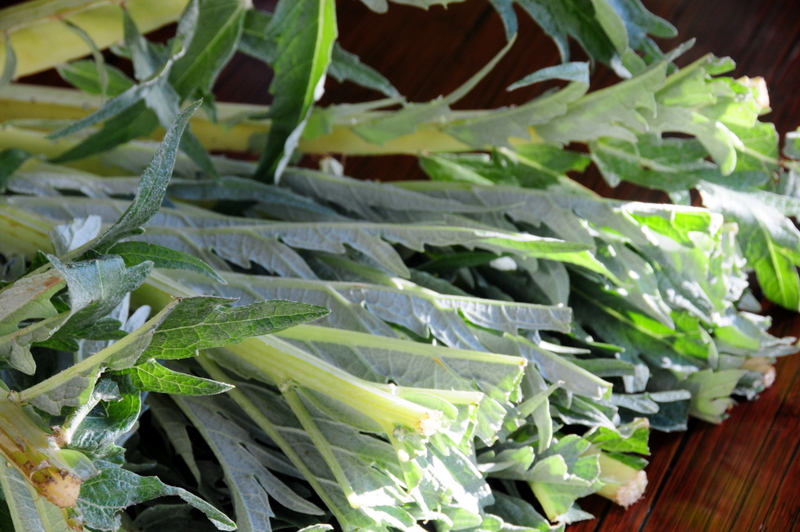Eggplant is one of my favorite vegetables and whenever I see a new recipe for it I just want to try it right away. This recipe is featured in the March 2013 edition of Saveur Magazine. A few years ago Steven’s colleague at work lent him a wonderful cookbook, “Pei Mei’s Chinese Cookbook Volume 1.” That book had an excellent recipe for Sichuan Eggplant.
He made it once and we were hooked. I’d say we have this dish at least once a month. It is so flavorful with black bean sauce, ginger, sesame oil, scallions and other delicious ingredients—and eggplant, of course: sweet, savory, sour and lots of umami flavor.
I would say that this recipe is actually a variation on Steven’s version. Both are Sichuanese style using very similar ingredients. In Steven’s recipe he cooks the diced eggplant in a hot pan, just tossing it around until they are done, so the oil absorbed is very little. This recipe calls for deep frying the eggplant, which I did, despite the guilty feeling. To prevent the eggplant from absorbing too much oil they suggest soaking it in ice water first. I’m not sure if that helped much, but it hardly mattered, as the dish itself had such a lovely delicate flavor, you could hardly tell.
vegetarian Sichuan fried and braised eggplant
4 Japanese eggplants
2 cups chopped Chinese chives
5 cloves garlic, minced
3 tbsp fresh ginger paste (I used fresh ginger that I ground with a fine micropane)
2 tbsp Chinese chili bean sauce (Toban Djan)
2 tbsp soy sauce
2 tsp Chinese black vinegar
1 tsp toasted sesame oil
1½ tsp sugar
Quarter the eggplant lengthwise. Make incisions in a lozenge pattern in the flesh without piecing the skin. Soak pieces in salted cold/ice water for 5-10 minutes. Drain and pat dry. Fry in hot oil (350F) for about 3 minutes. Remove from pan and lay eggplant pieces on paper towels.
Drain all but two tablespoons of frying oil from pan. Add garlic, ginger and cook for a minute just until raw aromas disappear. Add Chinese chives and continue cooking for another minute or so to wilt. Add chili bean sauce, soy sauce and sugar. Continue cooking to warm through. Add eggplant, one cup of hot water, black vinegar and cook for another 3-4 minutes. Drizzle with sesame oil, transfer to a serving bowl, sprinkle some Chinese chives over and serve with some rice cooked in the Brazilian way.















